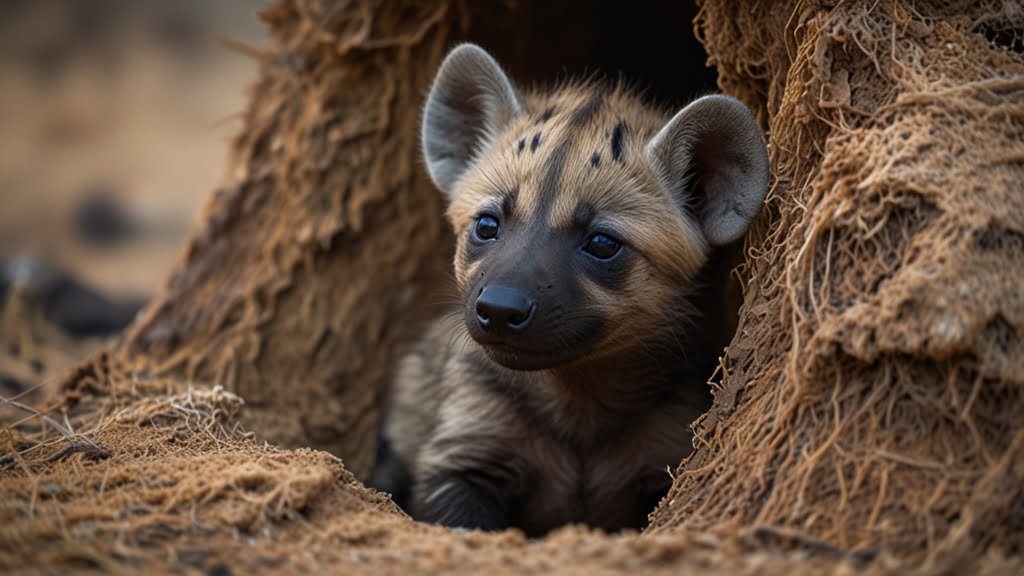Introduction
The striped hyena pup is one of the most intriguing and lesser-known young animals in the wild. Known for their distinctive markings and fascinating behavior, striped hyena pups offer a glimpse into the complex lives of these unique creatures. In this article, we will explore seven captivating facts about striped hyena pups, their growth, habitat, and the challenges they face.
1. What is a Striped Hyena Pup?
A striped hyena pup is the young of the striped hyena (Hyaena hyaena), a species native to Africa and parts of the Middle East. These pups are born blind and helpless, relying entirely on their mothers for warmth, nourishment, and protection during the early stages of their lives.
2. Birth and Early Development
Striped hyena pups are born in dens, which are often dug into the ground or found in rocky crevices. At birth, they weigh around 0.5 to 1 kilogram (1.1 to 2.2 pounds) and are covered in a thin, sparse coat. Their distinctive striped fur becomes more pronounced as they grow older. During the first few weeks, pups are completely dependent on their mother’s milk, which provides them with the essential nutrients needed for growth.

3. Social Structure and Behavior
Striped hyenas live in small family groups, and the mother plays a central role in the upbringing of her pups. Unlike spotted hyenas, which have complex social structures, striped hyenas have more solitary habits. The mother will often be the sole caregiver, though other members of the family may occasionally help in rearing the pups.
4. Diet and Feeding
As striped hyena pups grow, their diet gradually changes from milk to solid food. Initially, they are fed regurgitated food by their mother, which helps them transition to hunting and scavenging. By the time they are about 4 to 6 months old, they start accompanying their mother on foraging trips and learning to eat meat.
5. Growth and Development
The development of a striped hyena pup is marked by several stages. At around 6 months, pups start to resemble adult hyenas, though their stripes are less pronounced. By the age of 1 year, they are nearly fully grown and start to exhibit more independent behavior, although they often remain with their family for an extended period.
6. Challenges and Threats
Striped hyena pups face numerous challenges, including predation, disease, and habitat loss. Their survival rates can be affected by environmental factors and human activities. Conservation efforts are essential to protect their natural habitats and ensure that these pups have a safe and healthy environment in which to grow.
7. Conservation Efforts
Conservation organizations are working to safeguard the striped hyena and its habitat. Efforts include habitat preservation, reducing human-wildlife conflicts, and raising awareness about the importance of hyena conservation. Protecting striped hyenas helps ensure that future generations of striped hyena pups can thrive and contribute to the ecological balance.

Conclusion
The striped hyena pup is a remarkable creature with unique growth and developmental milestones. Understanding their early life stages, social behavior, and the challenges they face is crucial for their conservation. By supporting efforts to protect their habitats and reduce threats, we can help ensure that these fascinating animals continue to thrive in the wild.



